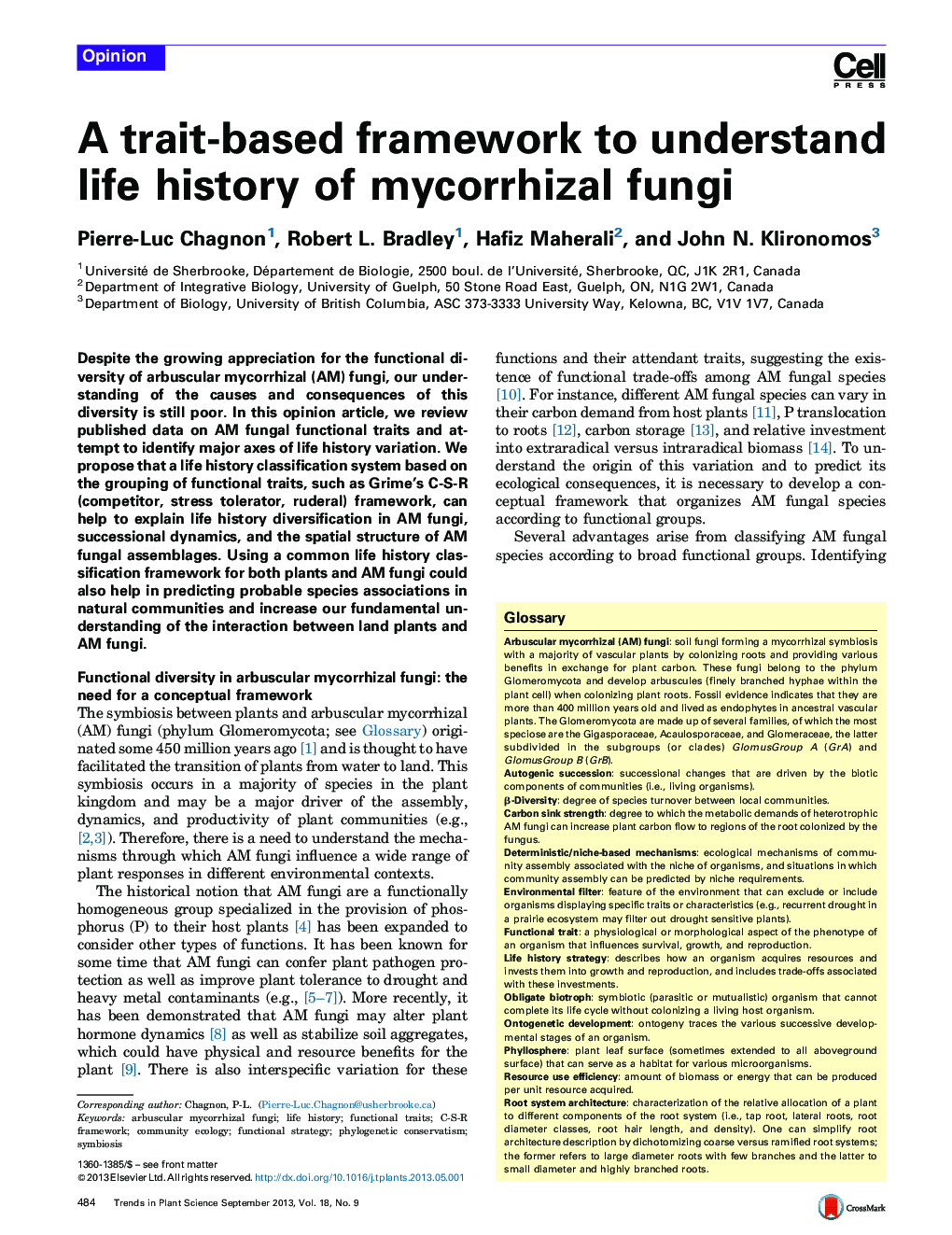| Article ID | Journal | Published Year | Pages | File Type |
|---|---|---|---|---|
| 2826127 | Trends in Plant Science | 2013 | 8 Pages |
•Data on arbuscular mycorrhizal (AM) fungal functional traits is reviewed.•Grime's C-S-R framework is used to organize AM fungal species in life history strategies.•Common classification for plants and fungi may shed light on preferential associations.•C-S-R offers predictive tool to explore AM fungal succession and community dynamics.
Despite the growing appreciation for the functional diversity of arbuscular mycorrhizal (AM) fungi, our understanding of the causes and consequences of this diversity is still poor. In this opinion article, we review published data on AM fungal functional traits and attempt to identify major axes of life history variation. We propose that a life history classification system based on the grouping of functional traits, such as Grime's C-S-R (competitor, stress tolerator, ruderal) framework, can help to explain life history diversification in AM fungi, successional dynamics, and the spatial structure of AM fungal assemblages. Using a common life history classification framework for both plants and AM fungi could also help in predicting probable species associations in natural communities and increase our fundamental understanding of the interaction between land plants and AM fungi.
